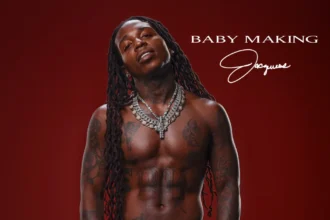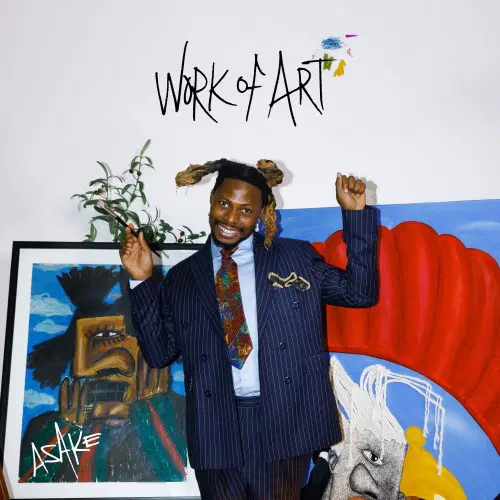Nigerian musician Asake has quickly established himself as a force in the music industry with just two albums. His latest project, Work of Art, is a testament to his ability to blend ancient sounds with contemporary pop inventiveness, showcasing a remarkable evolution in his artistry. The album resonates with vivid storytelling and an impassioned rap-singing style, truly embodying its title as a “work of art.”
One of the standout features of Asake’s music is his Afro-Fusion sound, which he elevates with a distinct Amapiano blend—a genre of South African house music rooted in kwaito. His ability to intertwine choral harmonies, string arrangements, and elements of the Indigenous Yoruba genre, Fuji, sets him apart from his contemporaries. With Work of Art, Asake flourishes, proving his versatility and creativity.
Read also: Review: Morravey – RAVI EP
Throughout the album, Asake skillfully avoids the predictable music that often saturates the airwaves. He collaborates once again with producer Magicsticks, a key figure in crafting his unique sound, which is characterized by delicate strings, wind instruments, ethereal vocals, and vibrant log drum rhythms.
Additional production credits go to Anoop D’Souza, P.Priime, and Blaisebeatz, while the only featured artist is Olamide, the renowned rapper and head of Asake’s label, YBNL. This collaboration creates lush soundscapes, giving the album depth and character that invites listeners to dance along, transcending language barriers.
Track by Track Review
Asake opens Work of Art with “Olorun,” a contemplative track where he praises both himself and the Divine. Through heartfelt lyrics, he acknowledges the divine presence in his journey, setting a reflective tone for the album.
The album’s lead single, “Amapiano,” introduces listeners to Asake’s anticipated sophomore project. With Olamide’s contribution, the track exemplifies Asake’s rising fame and what to expect from the rest of the album. The song serves as a prelude to his signature sound, further cementing his status as one of Afrobeats’ prolific hitmakers.
In “Basquiat,” Asake makes it clear that the “work of art” he refers to is himself. The song’s choruses remind listeners that celebration is a communal effort. It showcases his affinity for amapiano, highlighting its avant-garde nature within African music. This upbeat track is one of the album’s catchiest offerings.
“Sunshine” captures the warmth of shared moments with loved ones, buoyed by bubbling keyboards and uplifting choral melodies. In contrast, “Awodi” conveys a more serious undertone. Asake reflects on leaving the shantytowns, delivering the message with a slow, deliberate cadence that evokes a sense of togetherness.
“What’s Up My G” introduces melancholic chords, creating a sense of solitude against Asake’s signature log-drum loops, which provide a vibrant backdrop. He adeptly adjusts his vocal tone to fit the mood, showcasing the multifaceted nature of his wealth while lyrically celebrating luxury and success.
Asake seems to leverage this album as a medium for personal storytelling through succinct pop songs. Tracks like “Great Guy” transform amapiano’s savage bass synths into a rumbling texture, showcasing Asake’s lyrical depth. In “2:30,” he employs reverberating elements that evoke traditional Fuji’s talking drums. The album’s outro, “Yoga,” transforms the rich traditional aura of African music into a modern call for peace, illustrating the depth of Asake’s artistic vision.
Final Thoughts
Asake is undoubtedly in a remarkable creative space, demonstrating consistent output and high quality throughout Work of Art. He draws comparisons to the American artist Jean-Michel Basquiat, embodying a flow of positive energy that speaks to his vibrant inner visions coming to life. The album has peaked at #1 on Apple Music and is consistently in the top three on various streaming platforms in Nigeria, including Spotify, Boomplay, and Audiomack.
Asake’s revitalized zest for life and passion for music shine through in this incredible body of work. Work of Art portrays him in his full glory, establishing him not just as a musician but as an artist redefining the landscape of contemporary Afrobeats.





